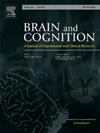A single bout of aerobic exercise does not alter inhibitory control preparatory set cerebral hemodynamics: Evidence from the antisaccade task
Abstract
A single bout of exercise improves executive function (EF) and is a benefit – in part –attributed to an exercise-mediated increase in cerebral blood flow enhancing neural efficiency. Limited work has used an event-related protocol to examine postexercise changes in preparatory phase cerebral hemodynamics for an EF task. This is salient given the neural efficiency hypothesis’ assertion that improved EF is related to decreased brain activity. Here, event-related transcranial Doppler ultrasound was used to measure pro- (saccade to target) and antisaccades (saccade mirror-symmetrical target) preparatory phase middle cerebral artery velocity (MCAv) prior to and immediately after 15-min of aerobic exercise. Antisaccades produced longer reaction times (RT) and an increased preparatory phase MCAv than prosaccades – a result attributed to greater EF neural activity for antisaccades. Antisaccades selectively produced a postexercise RT reduction (ps < 0.01); however, antisaccade preparatory phase MCAv did not vary from pre- to postexercise (p=0.53) and did not correlate with the antisaccade RT benefit (p = 0.31). Accordingly, results provide no evidence that improved neural efficiency indexed via functional hyperemia is linked to a postexercise EF behavioural benefit. Instead, results support an evolving view that an EF benefit represents the additive interplay between interdependent exercise-mediated neurophysiological changes.

 求助内容:
求助内容: 应助结果提醒方式:
应助结果提醒方式:


